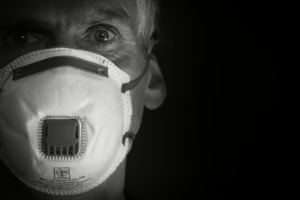Catabolism 101: A Beginner’s Guide to Energy Production in Human Anatomy
Introduction
Catabolism, one of the two main metabolic processes (the other being anabolism), plays a crucial role in how our bodies produce and utilize energy. By breaking down larger molecules into smaller ones, catabolism facilitates energy release, which is essential for numerous biological functions. In this guide, we’ll explore the intricacies of catabolism, its significance in human anatomy, and its interplay with various biochemical pathways.
What is Catabolism?
Catabolism is defined as the set of metabolic pathways that break down molecules into smaller units, releasing energy in the process. This process can be contrasted with anabolism, which is the biosynthetic phase where smaller molecules are built into larger, more complex structures. Catabolic pathways are essential because they provide the energy necessary for cellular processes and activities.
Types of Catabolic Processes
- Glycolysis: The breakdown of glucose.
- Beta-Oxidation: The degradation of fatty acids.
- Proteolysis: The breakdown of proteins into amino acids.
The Role of Enzymes
Enzymes are biological catalysts that speed up reactions without being consumed in the process. Various enzymes facilitate catabolic reactions, allowing for efficient energy production.
The Biochemical Pathways of Catabolism
1. Glycolysis: The Breakdown of Carbohydrates
Glycolysis refers to the metabolic pathway in which glucose is converted into pyruvate, releasing energy stored in chemical bonds. This process occurs in the cytoplasm of the cell and can be divided into two phases:
- Energy Investment Phase: Two ATP molecules are consumed to initiate the breakdown of glucose.
- Energy Payoff Phase: Four ATP molecules and two NADH molecules are produced.
Overall, glycolysis results in a net gain of two ATP molecules. This process can occur both aerobically and anaerobically, making it versatile in energy production.
2. Citric Acid Cycle (Krebs Cycle)
Following glycolysis, if oxygen is available, pyruvate enters the mitochondria, where it is converted to acetyl-CoA. This acetyl-CoA then enters the Citric Acid Cycle, also known as the Krebs Cycle. This cycle generates electron carriers (NADH and FADH2) and releases CO2 as a byproduct.
Key Outputs:
- ATP
- NADH
- FADH2
3. Oxidative Phosphorylation
The electron carriers produced from glycolysis and the Krebs Cycle enter the electron transport chain (ETC). This series of complexes in the inner mitochondrial membrane uses the electrons to create a proton gradient, ultimately leading to the synthesis of ATP.
- Chemiosmosis: Protons flow back into the mitochondrial matrix through ATP synthase, driving the formation of ATP.
4. Beta-Oxidation: Fatty Acid Breakdown
Beta-oxidation is the catabolic process that breaks down fatty acids to generate acetyl-CoA, which subsequently enters the Krebs cycle. Each cycle of beta-oxidation shortens a fatty acid by two carbon atoms, producing NADH and FADH2 alongside.
5. Proteolysis: The Breakdown of Proteins
Proteolysis involves the enzymatic breakdown of proteins into amino acids. This process becomes particularly relevant during fasting or prolonged exercise when glucose and fat stores are depleted, underscoring an energy-efficient way to generate ATP.
Energy Production and Utilization in the Body
The energy produced from catabolic processes is crucial for various bodily functions.
ATP: The Energy Currency
Adenosine triphosphate (ATP) is the primary energy carrier in cells. The energy stored in its high-energy phosphate bonds can be released for cellular processes such as muscle contraction, nerve impulse transmission, and biosynthetic reactions.
Cellular Functions Relying on ATP
- Muscle Contraction: ATP provides the energy necessary for muscle fibers to contract and relax.
- Active Transport: Substances are moved against their concentration gradient, requiring energy.
- Synthesis of Biomolecules: Building cellular components, from DNA to proteins, relies on ATP.
The Interplay Between Catabolism and Anabolism
While catabolism breaks down molecules to release energy, it is essential to consider its relationship with anabolism. This interplay contributes to metabolic homeostasis and energy balance.
Energetic Balance
The body maintains a delicate balance between catabolic and anabolic pathways to regulate energy levels. In periods of excess energy intake, anabolism is promoted (e.g., glycogen storage, fat deposition). In contrast, during energy shortages, catabolism increases to release stored energy.
Hormonal Regulation
Hormones like insulin and glucagon influence this balance. Insulin promotes anabolism, encouraging glucose uptake and storage, while glucagon stimulates catabolism, mobilizing energy during fasting states.
The Importance of Catabolism in Human Health
Understanding catabolism extends beyond basic biology; it is directly related to health and disease.
Metabolic Disorders
Imbalances in catabolic processes can lead to metabolic disorders. For instance, uncontrolled catabolism of fats can lead to ketone body production, resulting in ketoacidosis, while impaired catabolism can result in conditions like obesity or diabetes.
Exercise and Nutrition
Athletes often manipulate their diets to optimize catabolism. Understanding catabolic pathways allows for strategic carbohydrate and protein intake to enhance performance and recovery.
Conclusion
Catabolism is a vital biochemical process that underpins energy production in human anatomy. From the breakdown of carbohydrates and fats to protein catabolism, these processes are crucial for maintaining physiological functions. By understanding catabolism, we can make informed choices regarding nutrition and exercise, contributing to overall health and well-being.
References
- Lehninger, A. L., Nelson, D. L., & Cox, M. M. (2017). Principles of Biochemistry. W. H. Freeman.
- Berg, J. M., Tymoczko, J. L., & Stryer, L. (2012). Biochemistry. W. H. Freeman.
- Hall, J. E., & Guyton, A. C. (2015). Textbook of Medical Physiology. Elsevier.
- Rodwell, V. W., Bender, D. A., & Botham, K. M. (2015). Harper’s Illustrated Biochemistry. McGraw-Hill.
This introduction to catabolism provides a foundation for further exploration into the complex world of human metabolism. From cellular processes to nutritional implications, a solid grasp of catabolic pathways is essential for anyone interested in health, fitness, and science.


























Add Comment